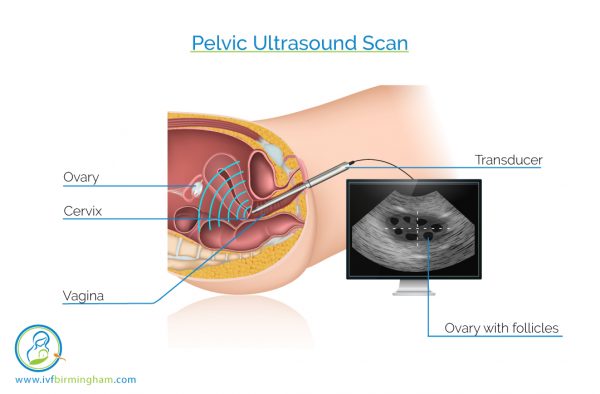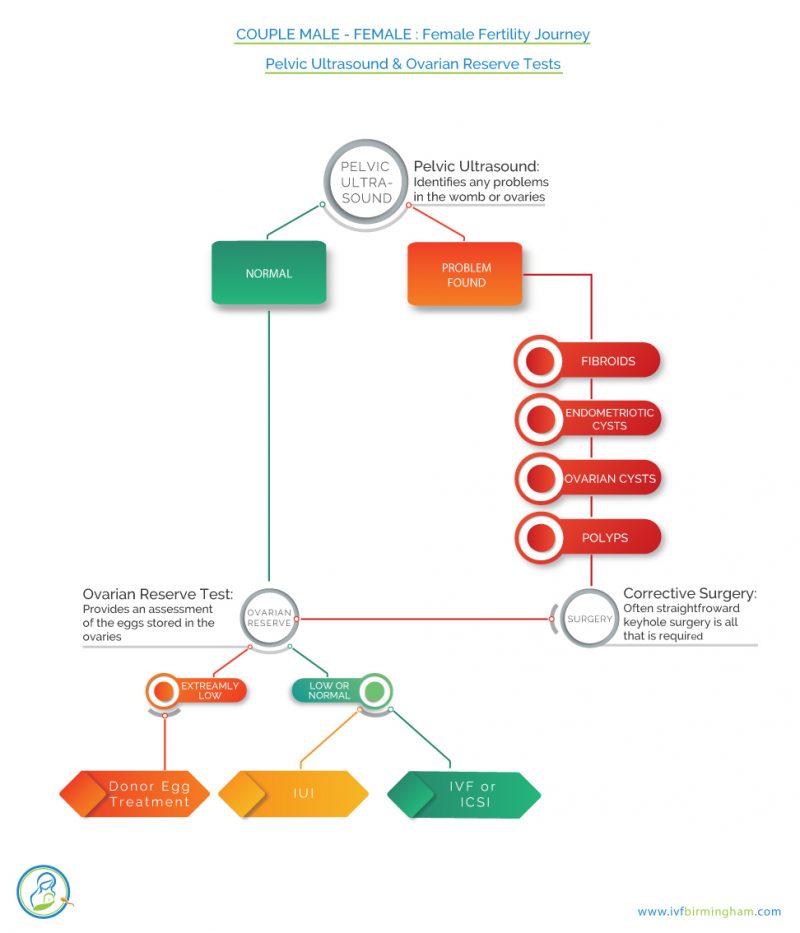Fertility Journey: Male – Female Couple
If you have been trying to conceive without success for longer than a year, you should consider seeking a consultation with a fertility specialist. Your fertility specialist will take your clinical history, and arrange a number of tests. The test results will normally be available within 2 weeks in private clinics and within 3 months in NHS clinics. Your specific treatment will depend on your clinical history, the test results and your preferences. The flowchart below shows a typical journey for a couple seeking fertility care for infertility.
Fertility Journey: Male – Female Couple
If you have been trying to conceive without success for longer than a year, you should consider seeking a consultation with a fertility specialist. Your fertility specialist will take your clinical history, and arrange a number of tests. The test results will normally be available within 2 weeks in private clinics and within 3 months in NHS clinics. Your specific treatment will depend on your clinical history, the test results and your preferences. The flowchart below shows a typical journey for a couple seeking fertility care for infertility.
Male Path
Male Test
Semen analysis involves the careful examination of the semen under a microscope to look at the count (or the concentration), movement (motility) and the shape (morphology) of the sperm. The sperm concentration needs to be more than 15 million per millilitre of semen. Normal sperm motility, or movement, is when at least 40% of sperm are moving. Finally, we want at least 4% of sperm to have normal shape (normal morphology).
The semen needs to be produced by masturbation. There are private rooms in fertility clinics to produce the semen, although some men find it necessary to produce the semen at home and bring it to the clinic for analysis. Whilst this is possible, it is ideal if the semen can be produced in the clinic itself as this will allow us to test a fresh sample. It is important to abstain from ejaculating for 3 days before the sperm test.
Treatments
ICSI is the same as IVF treatment, except for one step: In ICSI the egg and sperm are brought together by injecting the sperm directly into the egg. ICSI is useful when there is problem with donor sperm concentration, movement or shape, or if there is a history of poor fertilisation of eggs in previous IVF cycles.
Surgical sperm retrieval can be performed when no sperm is seen on a sperm test. There may be no sperm because the testicle is not making sperm or because there is an obstruction not allowing the sperm to travel from the testicle in to the ejaculate. In both scenarios it may be possible to collect sperm directly from the testicle itself.
Female Path
Female Tests
A pelvic ultrasound scan can assess the womb, the ovaries and the fallopian tubes. The assessment of the womb will include looking at the size and position, as well as looking for problems such as fibroids and polyps. The assessment of the ovaries will include looking at the size, nature, location and the number of follicles as well as looking for any cysts. The follicles are small fluid filled sacs that contain the eggs.

The follicle count is a good measure of egg count in the ovaries. The ultrasonographer will make a specific assessment of the ovaries to see if they have polycystic appearance or if there is any endometriosis in the ovary. Ultrasound can also help to look for fluid filled blocked fallopian tubes, which are called hydrosalpinges. However, a full assessment of fallopian tubes will need more advanced tests.
Problems Found
Treatments
ICSI is the same as IVF treatment, except for one step: In ICSI the egg and sperm are brought together by injecting the sperm directly into the egg. ICSI is useful when there is problem with donor sperm concentration, movement or shape, or if there is a history of poor fertilisation of eggs in previous IVF cycles.
Donor egg treatment may be used in a number of scenarios:
- When the store of eggs in your ovaries is too low for IVF treatment (this could be because of early menopause, surgical removal of your ovaries or general low egg store in your ovaries)
- Chemotherapy which has damaged your ovaries
- A chance that the use of your own eggs could pass on a genetic condition to your offspring.
Female Tests
You can have a urine LH test, progesterone test in the second half of the menstrual cycle, or ultrasound tracking of the follicles (egg sacs in the ovaries) to check if you are releasing eggs from the ovaries. The urine LH test can be purchased from most pharmacies. The progesterone test and the ultrasound follicle tracking are offered at fertility clinics.
Fallopian tubes can be tested with an X-ray dye test (called hysterosalpingogram) or an ultrasound dye test (called HyCoSy). Both of these tests can be done without the need for anaesthesia. A small plastic tube is passed into the womb and then a dye is injected though this tube. If the fallopian tubes are open, the dye will flow through the fallopian tubes and spill into the pelvic cavity. If a fallopian tube is blocked, then the dye will not flow through it.
Sometimes it may be necessary to do an operation called laparoscopy which involves the surgeon inserting a camera through the belly button to fully assess the fallopian tubes with a dye test. We can also look for endometriosis and even treat endometriosis at laparoscopy.
Problem Found
Treatments
The purpose of ovulation induction is to help a woman release an egg from an ovary. Women with conditions such as polycystic ovary syndrome may not be releasing an egg from their ovaries, and cannot therefore become pregnant.
Pills, such as clomid or letrozole, or FSH injections can be used to make the ovary release an egg. Clomid, letrozole or FSH injection helps to develop follicles (which are fluid filled sacs containing eggs).
When one or two follicles reach a mature size (about 18 – 20mm in diameter), ovulation may occur naturally, or ovulation can be induced with a hormone called HCG (Gonasi or Ovitrelle injection). It is important to monitor the growth of the follicle with ultrasound to ensure there is there is good growth and that there aren’t too many follicles developing, which can result in multiple pregnancies and related complications.



